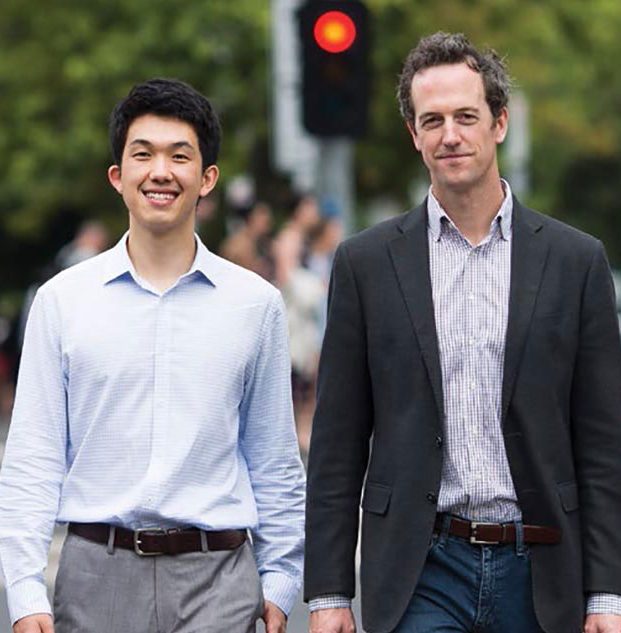This website uses cookies so that we can provide you with the best user experience possible. Cookie information is stored in your browser and performs functions such as recognising you when you return to our website and helping our team to understand which sections of the website you find most interesting and useful.
Research
New insight into Bietti Crystalline Dystrophy
New research tracking the progress of Bietti Crystalline Dystrophy provides a useful template for investigating other inherited retinal diseases.
People facing vision loss and blindness from Bietti Crystalline Dystrophy (BCD) have participated in research in an effort to better understand this rare genetic eye disease.
CERA researchers have released the results of an Australian-first study, which shows the disease manifests in both eyes of an affected person in a similar way.
The study, conducted with colleagues from the University of Melbourne, Austin Health, University of Auckland and University of Western Australia, is published in the American Journal of Ophthalmology.
Before the study little was known about whether the disease affected both eyes in the same way or differently.
The new information is a vital step in understanding more about BCD, which leads to severe visual impairment by middle age and is characterised by small, yellow crystals in the eye. There is currently no cure or treatment for BCD.
Laying groundwork
Dr Thomas Edwards is an ophthalmologist and the study’s Principal Investigator.
He says the findings of the study – which investigated the number, area and distribution of crystals in the eyes of participants – have laid down the groundwork for when treatments are found for BCD in the future.
“Our detailed characterisation of Australian and New Zealand patients with BCD gives us a better understanding of the disease, laying the path for future treatments,” says Dr Edwards, who is CERA’s Head of Retinal Gene Therapy Research.
“Symmetry between eyes can permit researchers to assess a potential new treatment in one eye, while leaving the other eye untreated as the ‘control’, and then compare the two eyes to see the difference.
“If the treatment is successful, they can then treat the other eye, confident it will work.
“They will also now better understand how the crystals increase and group together and will be able to identify the potentially vulnerable spots of the eye that need to be targeted for treatment.”
Researchers anticipate treatments will be developed in the future thanks to advances in gene therapy and other technologies, which would be life-changing for those with BCD.
About BCD
Globally, one in 67,000 people worldwide have BCD – but it’s more prevalent in the Asia Pacific region.
The crystals appear in the retina and the retinal pigment epithelium – layers at the back of the eye that help you see.
The crystals cause cells to slowly degenerate over time, leading to vision loss.
The loss typically starts in the teenage years and progresses to legal blindness when a person is in their 40s or 50s.
The one-year study, which began in August 2019, recruited 13 Australian and New Zealand people with BCD.
Counting crystals
Doctor of Medicine student Daniel Liu is the study’s First Author. His job included looking at images of the participants’ eyes to painstakingly count each crystal to determine the number and distribution of crystals, and compare both eyes.
To do this, he used a graphics tablet to outline and colour in each crystal in the back of the eye.
“The number of crystals seemed to depend on the stage of the disease,” Mr Liu notes.
“Early on in the disease, there were no crystals and then they built up – the most crystals I counted in one eye was over 2000. Later in the disease, they started to fall off again as the cells degenerated.”
Useful template
BCD is an inherited retinal disease, which is a range of genetic eye diseases that cause the cells of the retina to malfunction. These diseases can be passed down through families.
Dr Edwards says the research is a useful template for investigations into other inherited retinal diseases.
“It’s an example of how we could better understand what a disease looks like, how symmetrical it is in both eyes and how it changes over time,” he says.
Mr Liu and Dr Edwards attribute the success of the study to the dedicated team of researchers involved, plus the participants, who willingly gave their time.
“They’ve had their eyes tested multiple times for the study. We couldn’t have done it without them,” Dr Edwards says.
Read the study
Zhengyang Liu, Lauren N. Ayton, Fleur O’Hare, Janan Arslan, Monica L. Hu, Alexander P. Noar, Jiang-Hui Wang, Doron G. Hickey, Myra B. McGuinness, Andrea L. Vincent, Fred K. Chen, Thomas L. Edwards, Inter-Eye Symmetry in Bietti Crystalline Dystrophy, American Journal of Ophthalmology (2021), https://doi.org/10.1016/j.ajo.2021.07.009
This study and the researchers involved are supported by funding from the CASS Foundation, Angior Family Foundation, National Health and Medical Research Council, Hector McLean Scholarship (University of Melbourne) and RB McComas Research Scholarship in Ophthalmology (University of Melbourne). CERA also receives Operational Infrastructure Support from the Victorian Government.


